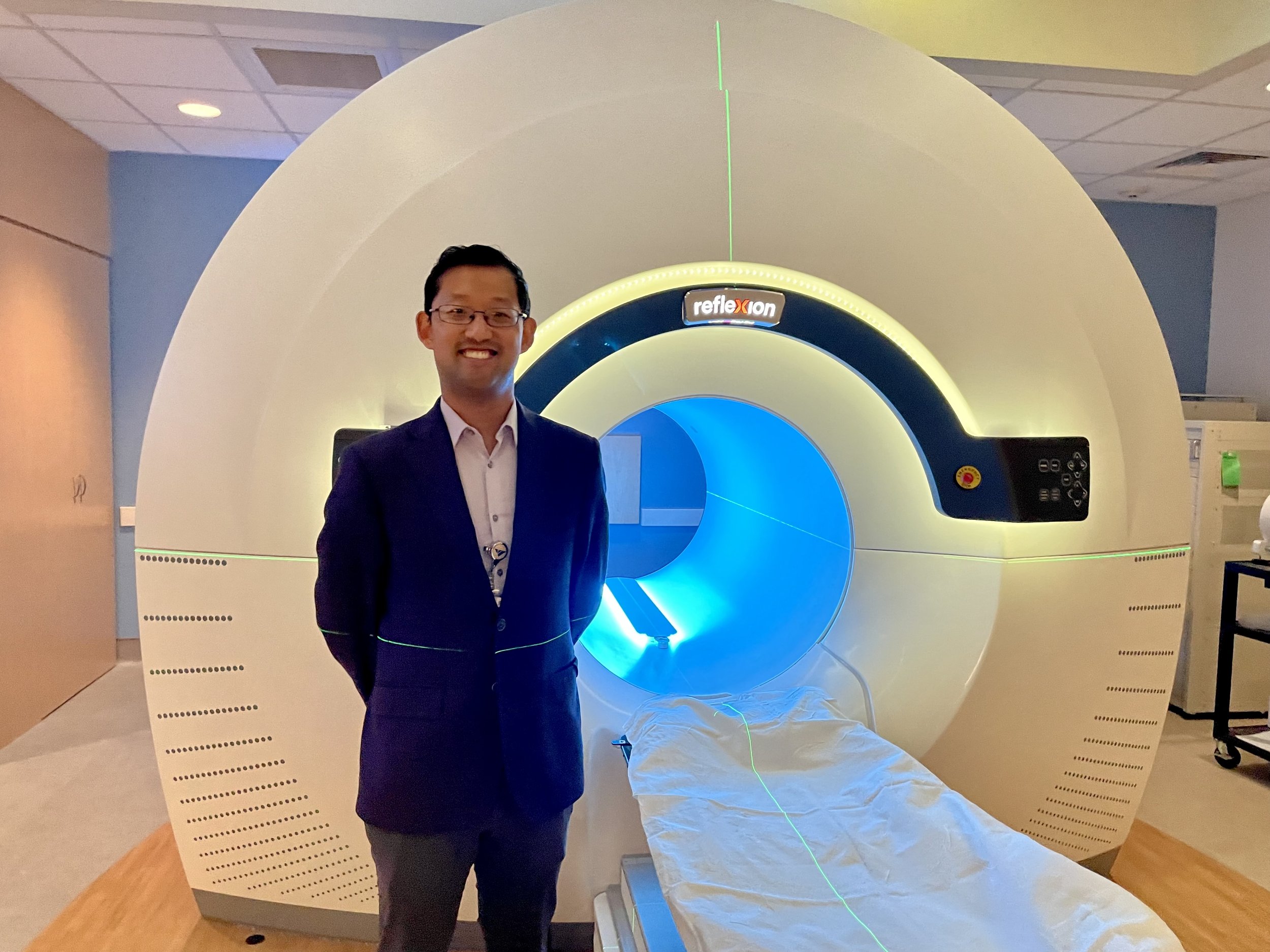
Radiotherapy
Radiation is an important strategy that can sometimes be used with curative intent. Dr. Henry Park at Yale Cancer Center is leading the way with innovative technology and clinical trials. Find out more in our podcast.
Stereotactic Ablative Radiotherapy for Oligometastatic Patients
SABR-COMET II
International randomized phase II trial: patients who received SABR demonstrated a 22-month improvement in median overall survival (OS)compared with patients who received a standard-of-care approach alone, corresponding to an absolute survival benefit of 25% at 5 years.
Stereotactic ablative radiotherapy (SABR) can sometimes be used with curative intent — even for stage 4, metastatic patients.
When I was first diagnosed, less than 5 tumors were apparent on my CT scan which qualified me as oligometastatic, meaning “few” metastatic spots. Unfortunately for me, a PET scan revealed more significant spread, but oligometastatic patients can sometimes be treated with curative intent.
If you have limited disease spread, please read this important research study and push to find out if SABR technology used as part of your initial treatment might be right for you.
Thinking Big
Yale School of Medicine
Vice Chair for Clinical Research, Therapeutic Radiology; Chief, Thoracic Radiotherapy Program, Therapeutic Radiology; Chief, PET-Guided Radiotherapy Program, Therapeutic Radiology; Assistant Medical Director, Clinical Trials Office, Yale Cancer Center; Associate Professor of Therapeutic Radiology
I knew I loved Dr. Park when he said he likes to “think big.” Outperforming cancer requires thinking big. Patients need advocacy, new technology, and doctors willing to try to treat us with curative intent. That’s exactly what I found when I visited Dr. Park at Yale.
Dr. Park is a board-certified radiation oncologist. He received his undergraduate degree from Yale College, master's degree from the Harvard School of Public Health, and medical doctorate degree from the Yale School of Medicine. He has co-authored over 200 peer-reviewed original research articles, reviews, book chapters, invited editorials, and practice guidelines.
New RefleXion SCINTIX
Biology-Guided Radiotherapy
SCINTIX® technology is a novel therapy for patients with tumors in the lung or bone arising from primary and metastatic cancer. This breakthrough technology uses live, continuously updated data throughout the entire treatment session to determine where to deliver radiotherapy. If the tumor moves, the dose moves with it.
The X1 platform with SCINTIX therapy treats multiple tumors in a single treatment plan. Hybrid treatments include both SCINTIX and SBRT targets in a single session so clinicians can choose the best therapy for each tumor.
Best of all? Check out the RefleXion vision statement: To reveal cancer as never before and beat it for everyone, everywhere.
Yale Cancer Center, Exceptional Care
I travelled to Yale Cancer Center with my friend, Mary, to visit Dr. Henry Park and see their new RefleXion SCINTIX technology at the Smilow Cancer Hospital. Our experience was nothing short of excellent. Every person we met was more helpful than the last. This is truly an organization of professionals that “think big” and do so with expertise, compassion, and collaboration.
I encourage everyone to reach out to cancer innovators. Don’t call it a second opinion; think of it as “more smart people thinking about your case.” Doctors are curious and energized by learning. They want to meet with patients interested in helping themselves. Innovations happen every day. No one can keep up with everything. Don’t be afraid to bring the best and the brightest minds together to help you outperform cancer.
Traveling to medical centers can get expensive. Get free lodging at Hope Lodges and other support from the American Cancer Society.
Lucky Ladies
Several research studies have found women experience greater survival benefit from radiotherapy than men.
A study conducted by Dr. Henry Park, found women with extensive-stage small cell lung cancer receiving consolidative thoracic radiation therapy (cTRT) experienced better overall survival than men
Median Overall Survival (OS) for women with cTRT: 17.5 months
Median OS for women without cTRT: 11.2 months
👉 That’s an increase of 6.3 months in median overall survival, which is approximately a 56% improvement in survival time. This effect was not seen in men, who did not experience a statistically significant improvement in survival from cTRT.







